The so-called 'marsh terns' are always a delight, typically seen feeding low over water with a buoyant, erratic flight and dipping delicately to the surface in the manner of a Little Gull. This article focuses on three species: one regular, Black Tern; one scarce, White-winged Tern; and one rare, Whiskered Tern.
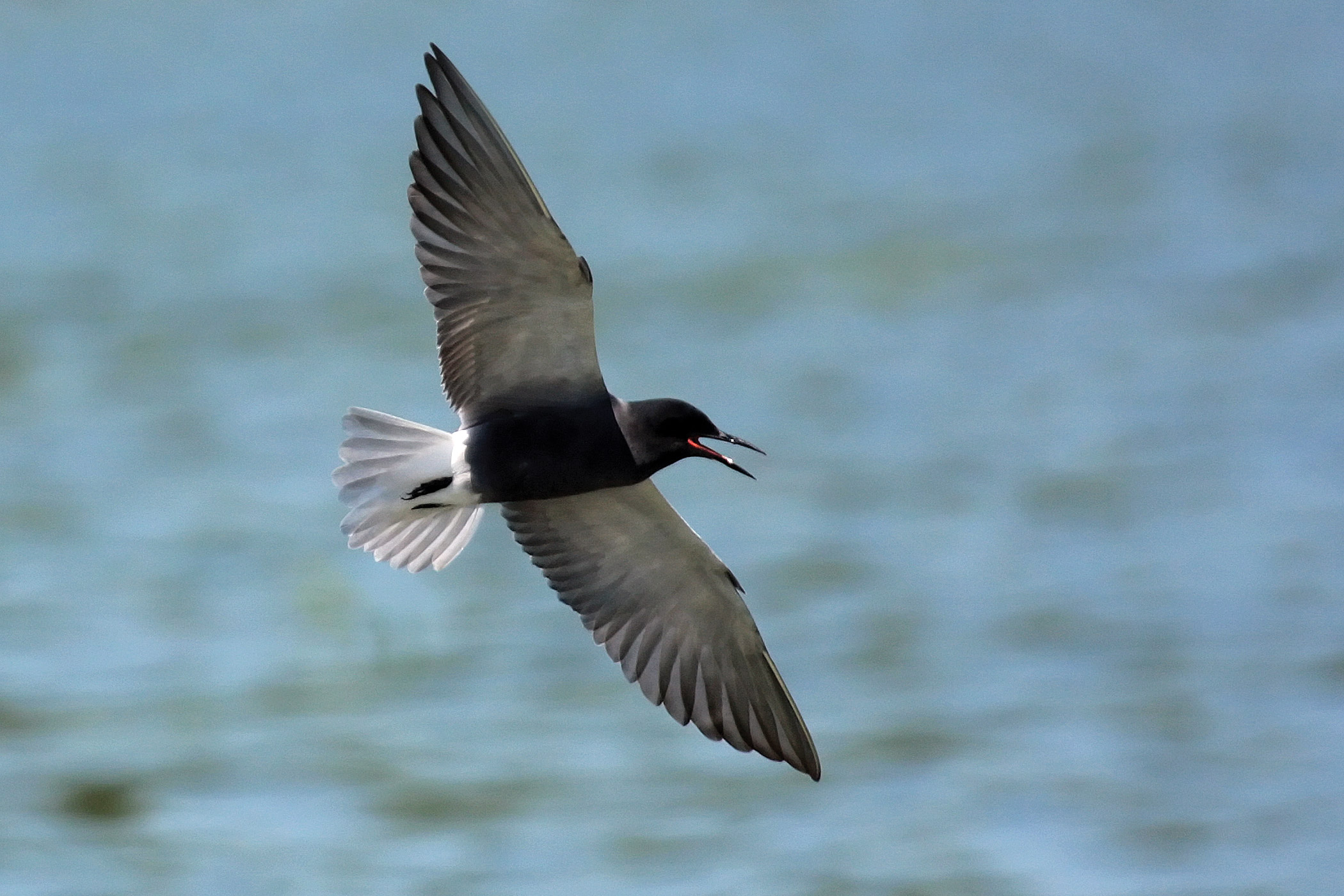
Adult Black Tern (Attenborough NR, Nottingham, 31 May 2009). With their highly distinctive summer plumages, all the 'marsh terns' are a delight. This summer Black Tern shows the typical sooty black body, uniform pale grey underwings and 'stuck-on' white rear end. The black bill and legs are also visible here (Darren Chapman).
Black Tern
Nominate Black Tern breeds from western Europe east to central Russia and winters in Africa. The subspecies surinamensis ('American Black Tern') breeds in North America and winters south to Central and South America. The species is an exceptionally rare breeding bird in Britain, but a regular passage migrant in both spring and autumn. South-easterly winds, particularly in May, can trigger occasional large influxes. It occurs commonly on coasts but is often seen inland too; indeed it is a classic lake and reservoir bird.
This is a supremely elegant species, slim bodied and slim billed, with short legs with no visible 'knee' when perched. Summer-plumaged adults are beautiful and striking: deepest black on the head and grey-black on the underbody, with paler grey upperparts, upperwings, rump and uppertail. The underwings are uniform grey, the vent and undertail coverts are white and the bill and legs dark.
In first-winter and adult winter plumages, the head and underbody turn white, leaving just a dark patch on the crown which extends down across the ear coverts in a 'headphone'-like pattern, and have a characteristic dark 'shoulder' mark (actually at the breast sides). The upperparts, rump and tail are grey.
In juveniles, the mantle and scapulars are dark with prominent transverse pale fringing creating a distinct barred effect. The legs are reddish.
'American Black Tern' is a true rarity in Britain, with only a handful of records to date. It is most likely to be encountered in autumn and in juvenile plumage. This differs from nominate Black Tern in being darker above (on both the mantle and rump) with the 'shoulder mark' leading into extensively dusky, grey-washed flanks, best seen in flight, which form a prominent dark smudge along the side of the body. The dark crown and ear covert patch is also a little more restricted, the crown appearing paler than the ear coverts. Summer adults are a deeper, more velvety black on the head and underbody than nominate birds, with a slightly paler upperwing.
White-winged Tern
This species breeds from eastern Europe patchily across the whole of Asia and winters in Africa and southern Asia south to Australia. It is a scarce migrant in Britain with perhaps around 20 records in a typical year, mainly involving summer adults in spring and summer and juveniles in autumn. As with Black Tern, it could occur almost anywhere and has a long history of turning up at inland lakes and reservoirs, particularly in the south and the Midlands.
Compared with Black Tern, it is slightly smaller and stockier, with a shorter bill, shorter, broader and blunter wings and a shorter tail with a shallower fork. The legs are longer than those of Black Tern, often with some 'knee' showing when perched.
Summer-plumaged adults are beautiful and eye-catching: a striking deep velvety-black on the head and body, with the upperwings, especially the leading edge and forewings, bright and contrastingly white. The rump and tail are pure white also, but the underwing coverts are solidly black, contrasting sharply with the rest of the underwing, a very important distinction from adult Black Tern. The bill is dark, but the legs are red.
First-winters and adult winters are white headed and white on the underbody like Black Tern, but the crown patch is smaller (often separated from the dark on the ear coverts), there is no dark 'shoulder mark' and the rump and tail-sides are white. Juveniles have dark barred upperparts as with Black Tern, but these contrast much more strongly with a rather pale upperwing, creating a clear dark 'saddle', easily visible both at rest and in flight.
Whiskered Tern
This species breeds from western Europe patchily across to east Asia, wintering in Africa, southern Asia and Australasia. It is by far the rarest of our trio in Britain, but has still amassed more than 200 records to date. Most are spring 'overshoots' (and small flocks have occurred at this time) but there is a scatter of autumn records, too.
This is a larger and much stockier species than Black Tern, longer and stouter billed, longer and broader winged and with a slightly deeper tail fork. The legs are longer than those of Black Tern, with a visible 'knee' when perched. In flight it looks more purposeful and robust than the other two species.
Summer adults are black capped, grey bodied and white cheeked, resembling a Sterna tern. They differ, however, in structure – note particularly the shallow tail fork – and also in plumage. The underparts are very dark grey (much darker than those of Sterna terns,) with a very strongly contrasting white cheek, sharply demarcated white vent and undertail coverts, pale grey underwings, mid-grey upperparts and a concolorous mid-grey rump and tail. The legs and bill are red.
First-winters and adult winters are white headed and white on the underbody, with an extensive dark streaked 'cap' – with a rather straight lower edge – reaching the rear of the crown, therefore more closely resembling a Sterna tern. The upperparts are pale grey and the rump and tail are grey, too, although the latter has slightly paler sides. The bill and legs are dark.
Juveniles are strongly 'dark saddled', with a marked contrast between the upperparts and the pale wing, resembling a juvenile White-winged Tern. However, the mantle and scapulars are more coarsely patterned, each feather having a pale base as well as a pale tip.
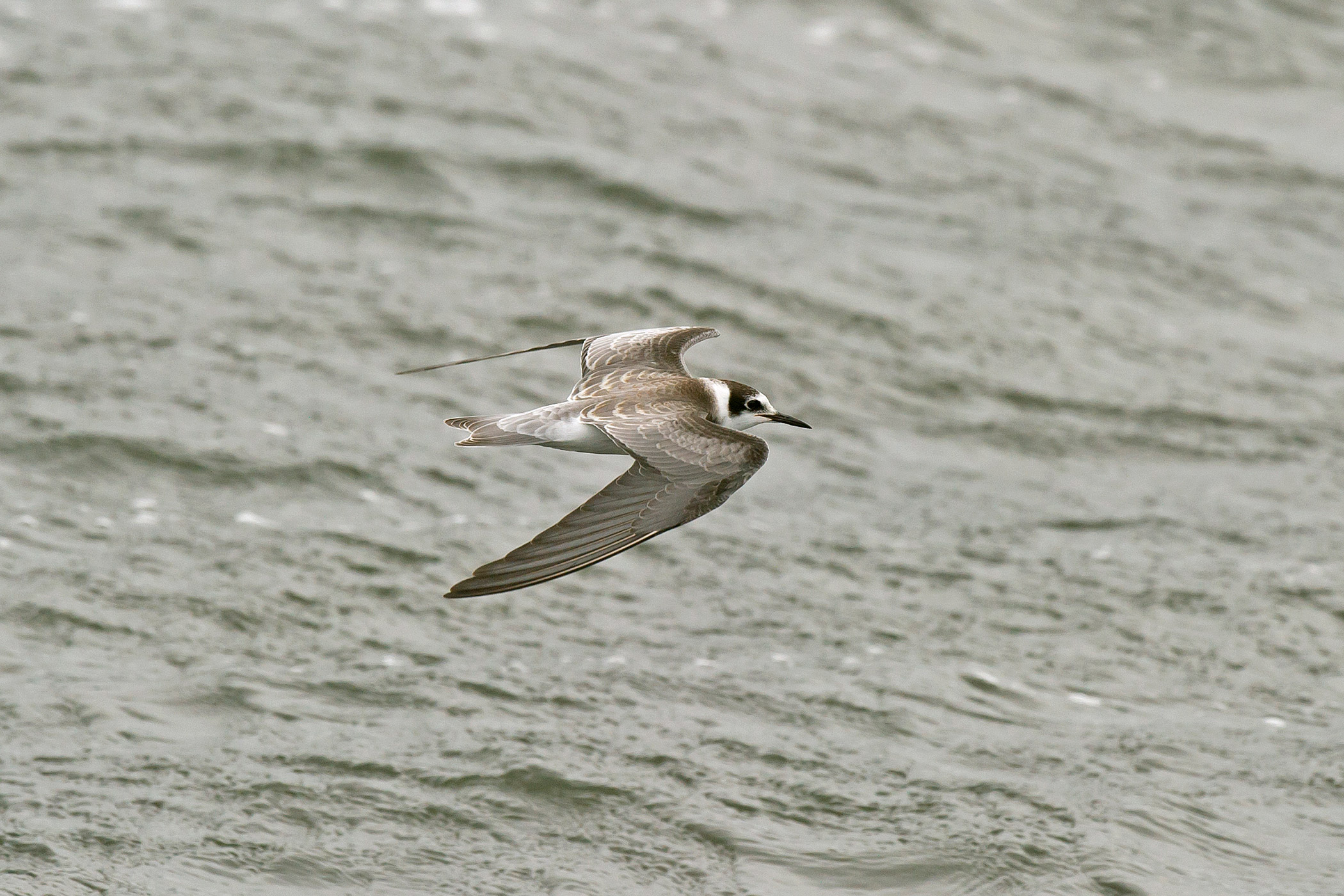
Juvenile Black Tern (Seaforth, Lancashire, 6 September 2011). The 'shoulder mark' is hidden from view in this flight image, but the bill structure and the extensive 'headphones' can be readily seen. Note also the relatively uniform upperparts, lacking any contrasting dark 'saddle', as well as the grey rump, uppertail coverts and uppertail (Steve Young).
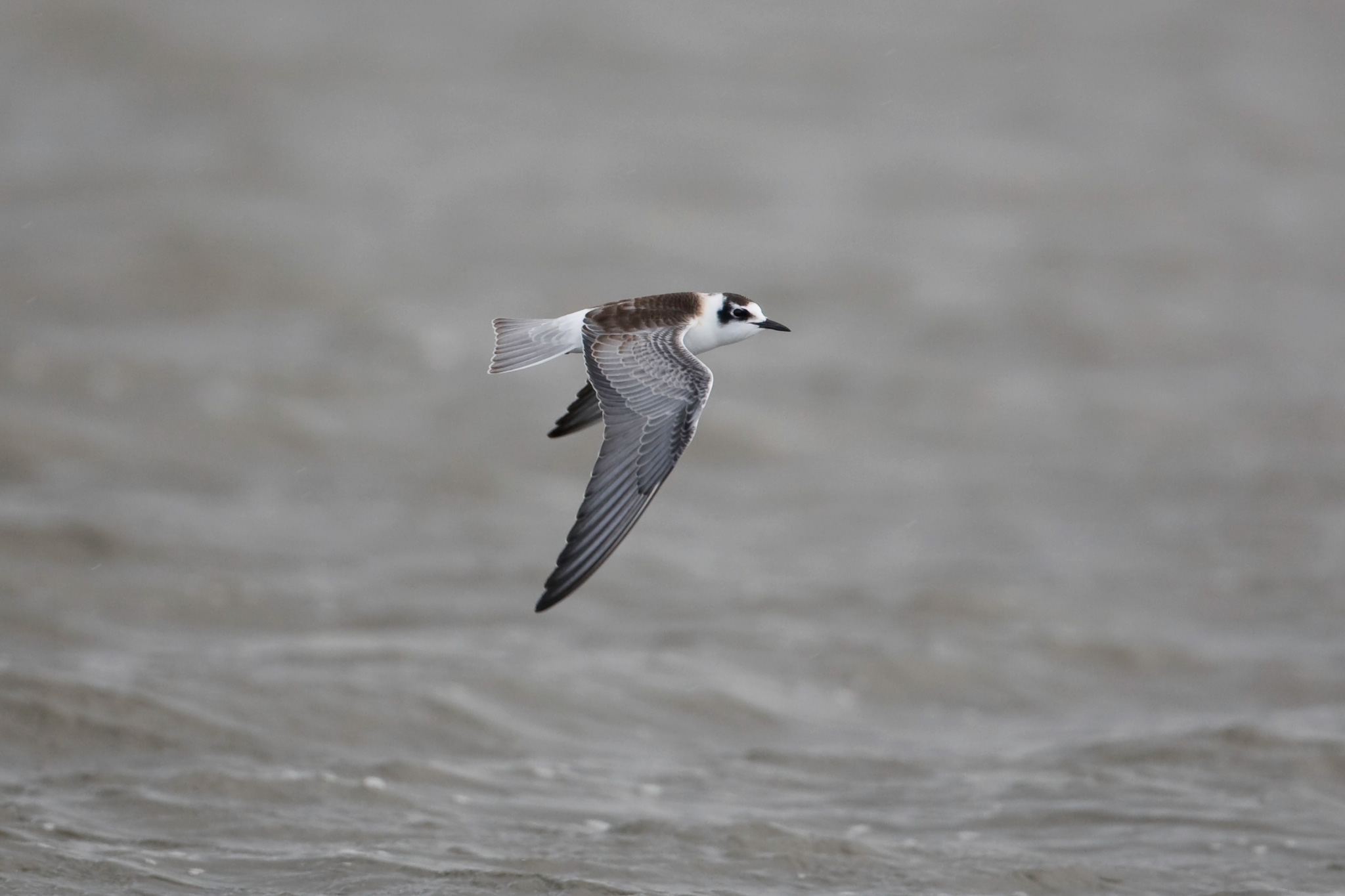
Juvenile White-winged Tern (Cresswell Pond, Northumberland, 15 September 2010). The 'saddle' contrast is clear here, eliminating Black Tern. Other key White-winged Tern features visible include the shorter, stouter bill, the reduced 'headphones', the lack of a dark 'shoulder mark', contrasting white rump and uppertail coverts, and narrow white tail-sides (John Malloy).

Juvenile Whiskered Tern (Saltholme RSPB, Co Durham, 14 August 2010). The dark 'saddle' on this Whiskered Tern is obvious here – although some grey winter feathers are appearing – but note also the rather stocky structure with broad wings. The stout bill and extensive dark in the crown and nape can also just be made out, while a further useful distinction from juvenile White-winged Tern is the uniform pale grey rump, uppertail coverts and uppertail (Steve Clifton).

Juvenile American Black Tern (Terceira, Azores, 11 September 2009). With its prominent dark 'shoulder mark', this is an easy identification as a Black Tern. However, the rather extensive grey wash along the flanks should start to ring alarm bells. Young European Black Terns are wholly white along the flanks, but such extensive grey clouding is typical of the North American subspecies surinamensis, or 'American Black Tern', a very rare autumn vagrant to Europe. Any bird looking like this deserves closer scrutiny! (Olof Jönsson).
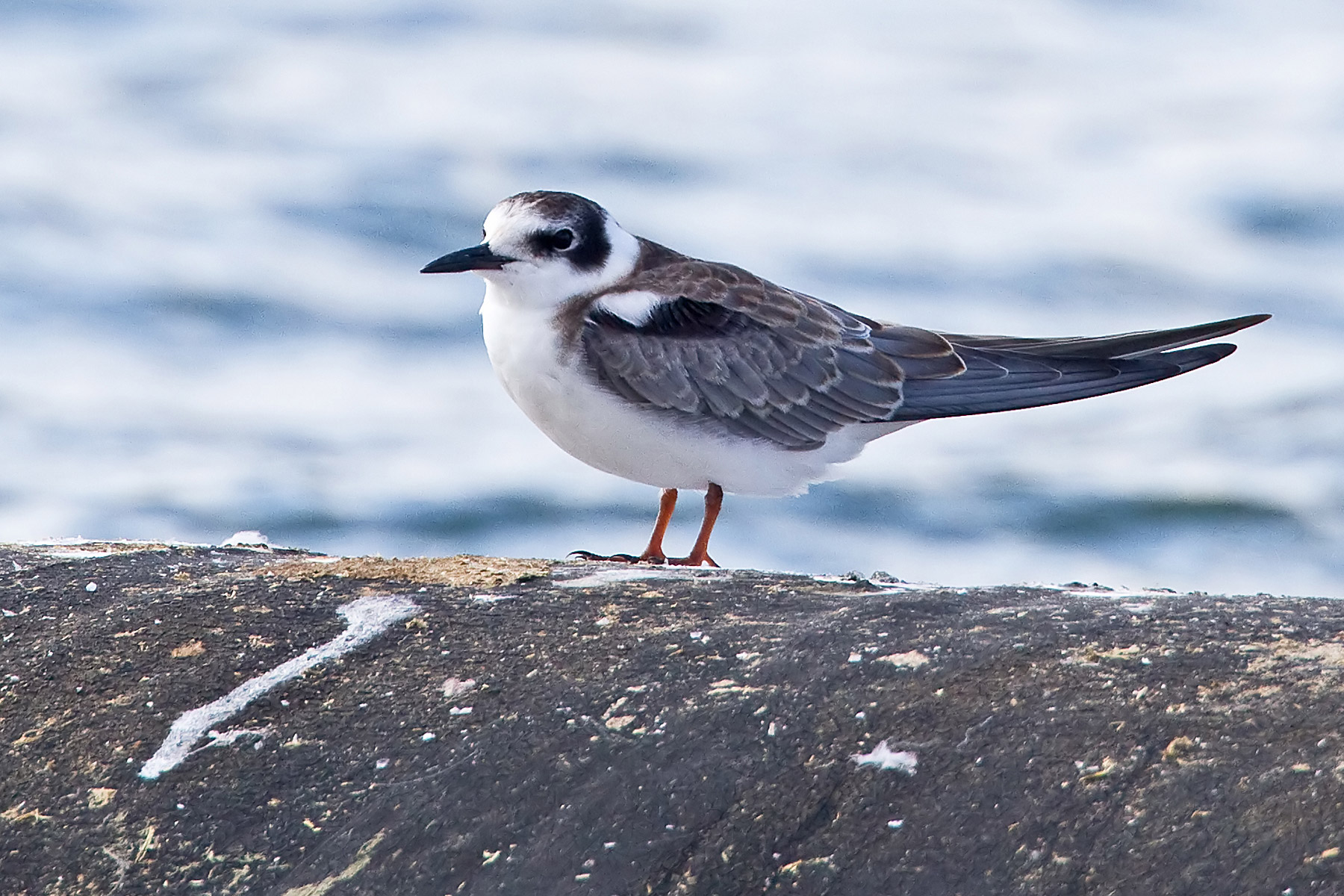
Juvenile Black Tern (Grafham Water, Cambridgeshire, 19 August 2011). This beautifully fresh, 'scaled' bird is a juvenile marsh tern, the extensive 'headphones', long, slender bill and short reddish legs identifying it readily as a juvenile Black Tern. Also just visible here is the dark 'shoulder mark' on the breast sides (Garth Peacock).
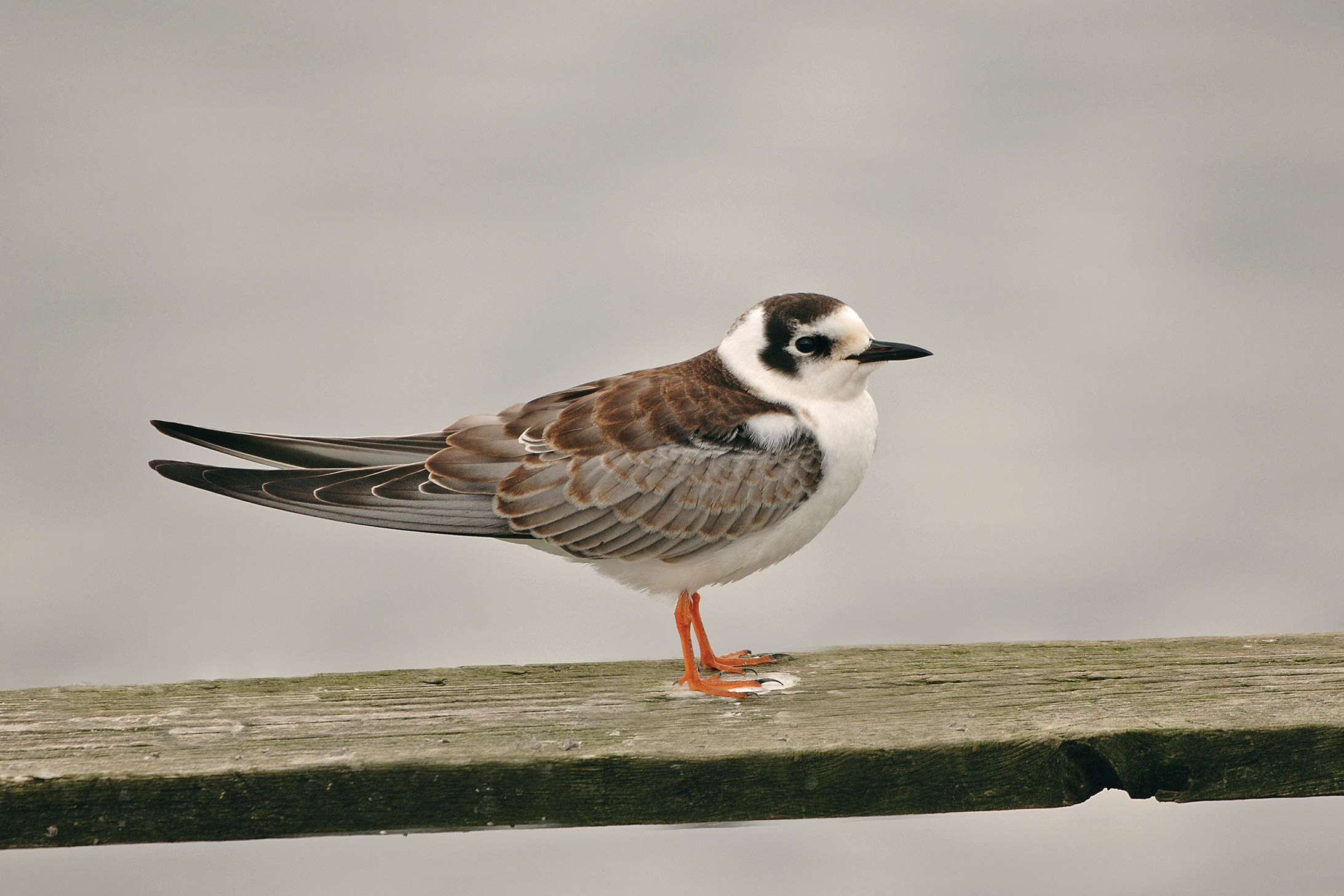
Juvenile White-winged Tern (Seaforth, Lancashire, 10 September 2005). This perched juvenile marsh tern closely resembles Black Tern, but the bill is shorter and stouter, the legs are longer with a more visible 'knee' and the 'headphones' perhaps a little less extensive. Note also the lack of a dark 'shoulder mark'. A key feature, however, are the mantle and scapulars which are clearly darker than the closed wing and form a contrasting 'saddle'. This contrast is never seen on Black Tern (Steve Young).
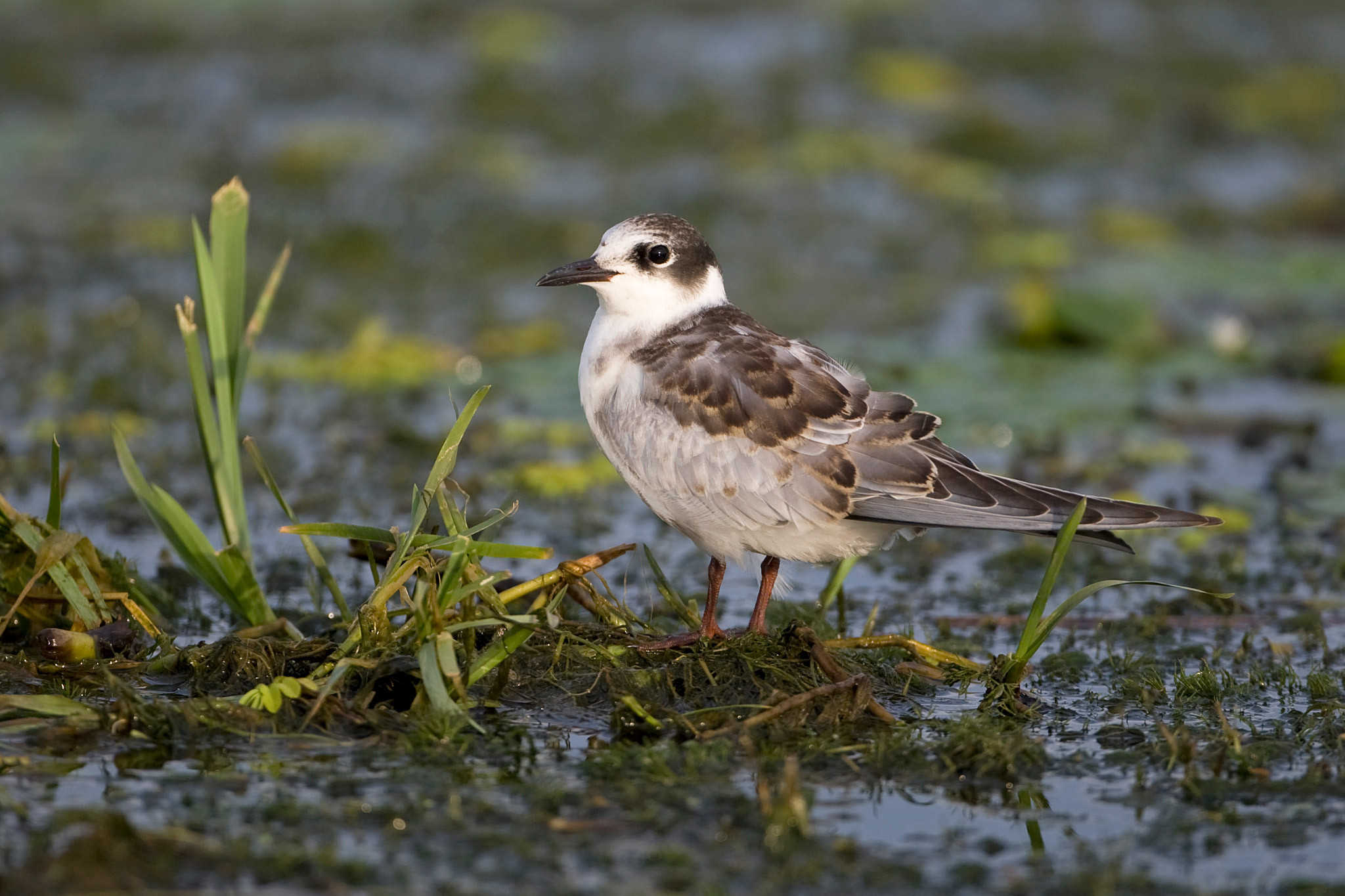
Juvenile Whiskered Tern (Danube Delta, Romania, 21 August 2007). This juvenile marsh tern exhibits a strikingly contrasting dark mantle and scapular 'saddle', so is it a White-winged Tern? Note, however, the particularly stout, deep-based bill with a strongly curved culmen and the extensive dark in the crown and nape resembling a Sterna tern. The pattern of the upperparts differs also, each mantle and scapular feather having a pale base, producing a more barred appearance. These are all classic features of Whiskered Tern at this age (Robin Chittenden).
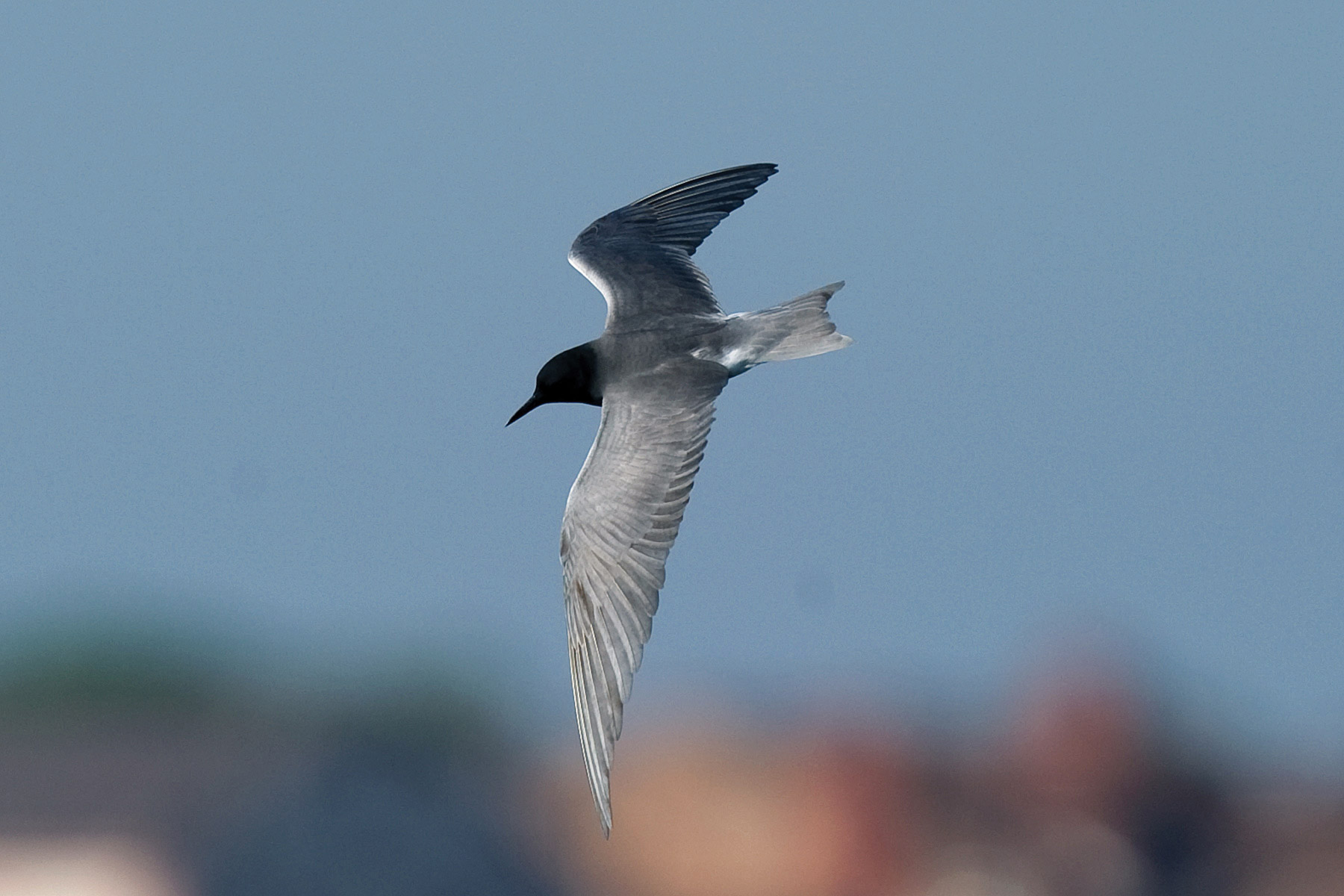
Adult Black Tern (Seaforth, Lancashire, 23 May 2010). The contrast between the sooty-black head and the ash-grey upperparts and upperwings are shown to good effect here. Note also the greyish rump, uppertail coverts and uppertail which lack any real contrast with the rest of the upperparts. The typical Black Tern structure is shown here, too: a long, slim bill, long, slender, sharply pointed wings and a relatively shallow tail fork (Steve Young).

Adult White-winged Tern (Caldiran, Turkey, 20 May 2011). In flight, an adult summer White-winged Tern is very beautiful, with a sharp contrast between the black body and the pale upperwings, whitest on the leading edge and inner wing coverts. A key difference from Black Tern can be seen on the underwing – uniform greyish on the former, but here with a dramatic contrast between black underwing coverts and pale greyish undersides to the flight feathers. Also visible are the short bill and red legs (Daniele Occhiato).
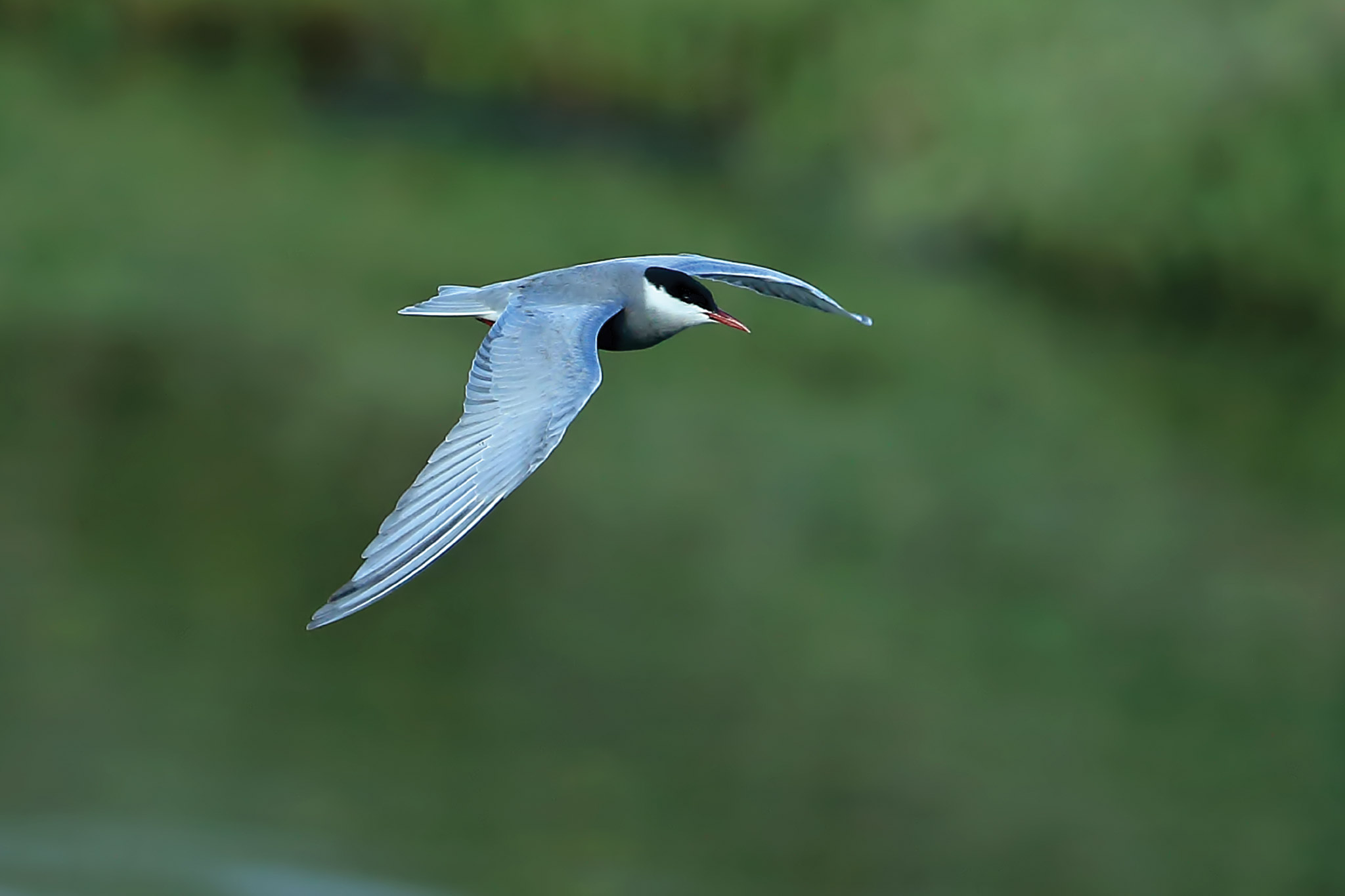
Adult Whiskered Tern (Lesvos, Greece, 14 May 2014). The contrast between the very dark underparts and the paler upperparts is shown well in this flight shot, although the contrast is accentuated by the effect of light and shade. Note also the strong white cheek patch, the rather uniform grey upperwing, the stout red bill and, at the rear end, a grey rump, uppertail coverts and uppertail – the latter with narrow white tail-sides – which provide no contrast with the rest of the upperparts (Robin Chittenden).
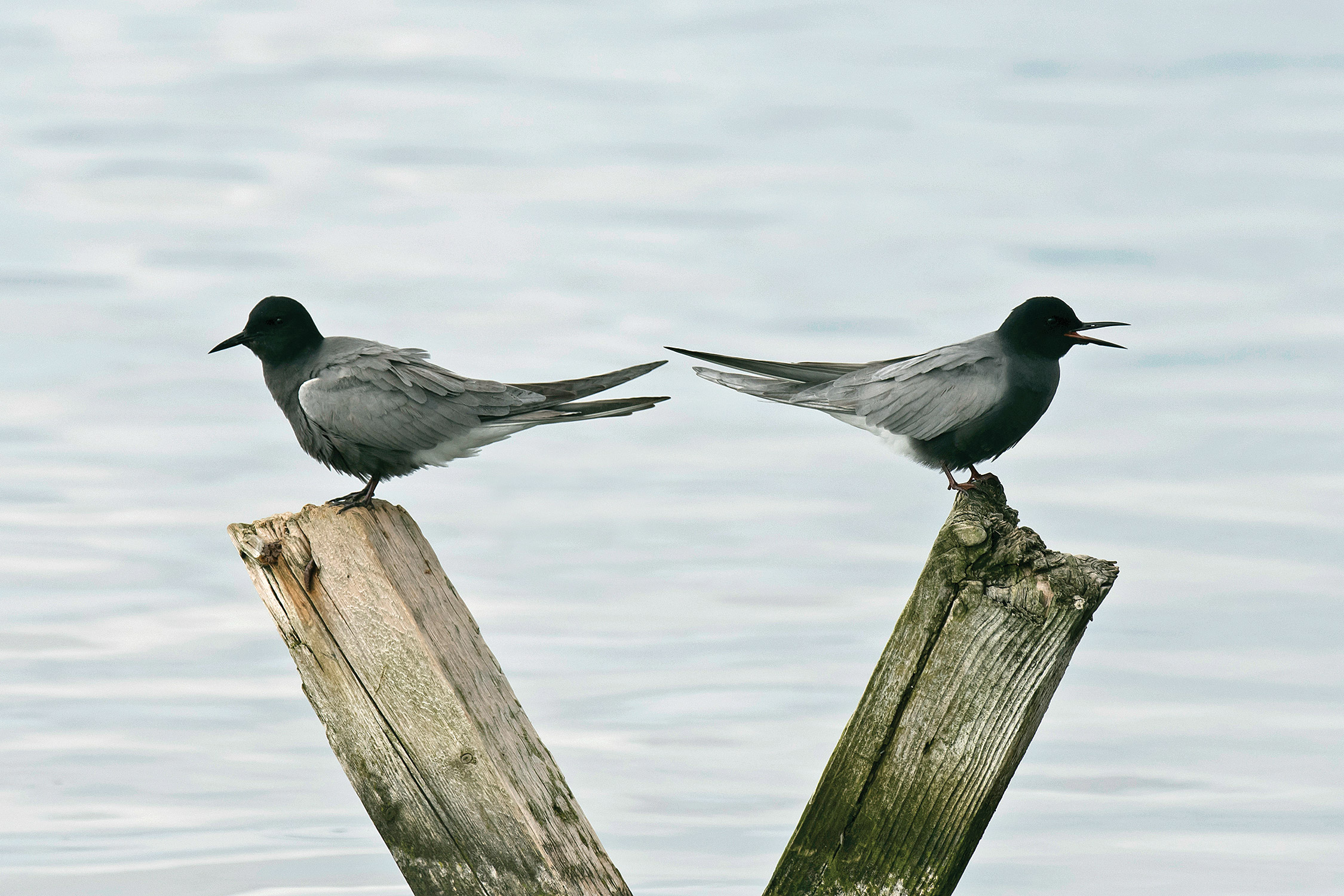
Adult Black Tern (Seaforth, Lancashire, 1 May 2017). When seen well, summer-plumaged Black Terns are a dark sooty black on the head and underbody, but a medium ash grey on the upperparts and upperwings. Note here the typically long and slender bill and the rather short and dark legs with no visible 'knee'. The white vent and undertail coverts can also just be seen (Steve Young).
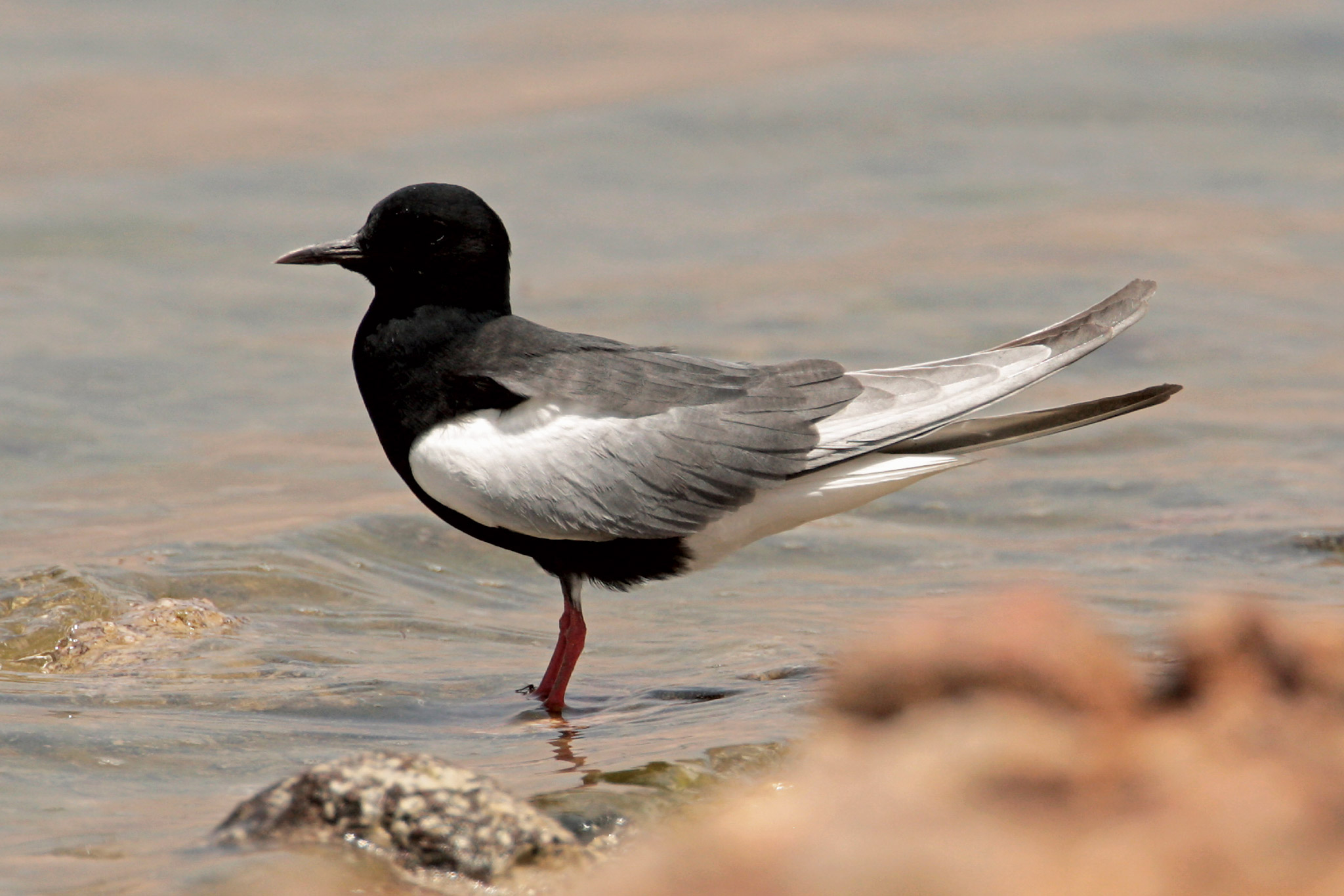
Adult White-winged Tern (Eilat, Israel, 2 May 2016). Adult summer White-winged Tern is both striking and beautiful. The head and body are glossy black, a touch darker than Black Tern, while the upperparts are more greyish. More striking, however, is the 'white-winged' effect caused by the bright white leading edge to the wing and the inner wing coverts. Note also some structural differences from Black Tern: a shorter, stouter bill and longer, red legs with a clearly visible 'knee' (Steve Arlow).
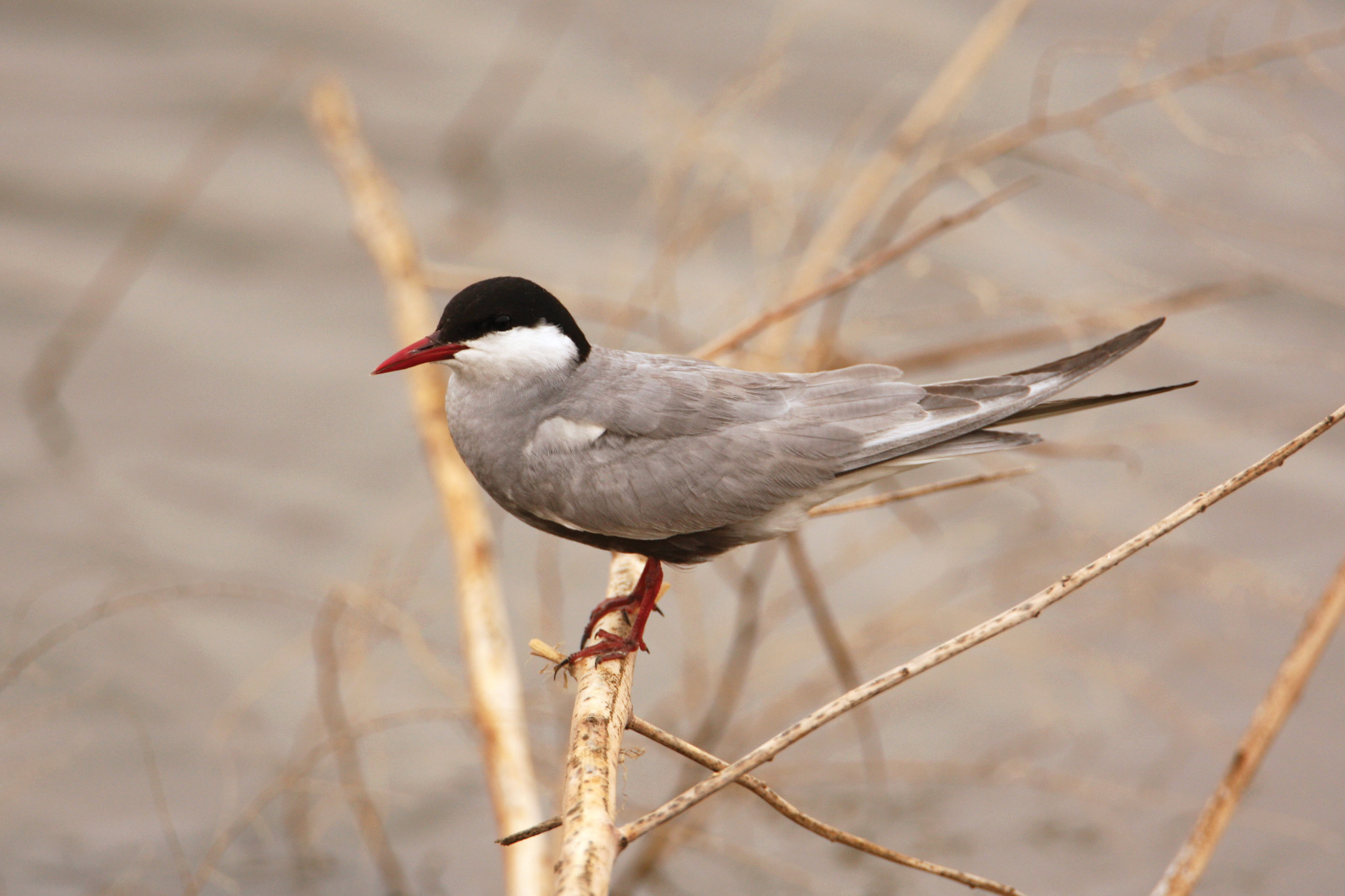
Adult Whiskered Tern (Nizanna, Israel, 6 May 2014). With their black caps, white cheeks and greyish underbodies, summer-plumaged Whiskered Terns are perhaps reminiscent of Sterna terns, particularly Arctic Tern. However, Whiskered is a larger and much stockier species than other marsh terns with, as shown well here, a stout, heavy, deep-based bill with a strongly curved culmen, quite long legs with a visible 'knee' and – compared with Sterna terns – just a shallow tail fork with no tail 'streamers'. The underparts are even darker than the upperparts – a distinctive deep ash grey – but the vent and undertail coverts are contrastingly white (Steve Arlow).

Adult Black Tern (Kornwerderzand, The Netherlands, 15 September 2007). A few grey body feathers remain on this bird which is almost in full winter plumage. The 'headphones' are extensive – typical of Black Tern – while the long, slim bill is further confirmation. Equally important is the dark 'shoulder mark' on the breast sides: a vital feature of Black Tern in non-breeding plumage. The legs are more reddish at this season (Marc Guyt / AGAMI).

Adult White-winged Tern (Terceira, Azores, 30 September 2009). The bill on this bird is quite short, there is no sign of any dark 'shoulder mark' and the 'headphones' are a fairly weak feature, particularly across the crown which is paler than the ear coverts. These are all clues that this bird is a White-winged Tern. Note also the narrow white sides to the tail (Dominic Mitchell).
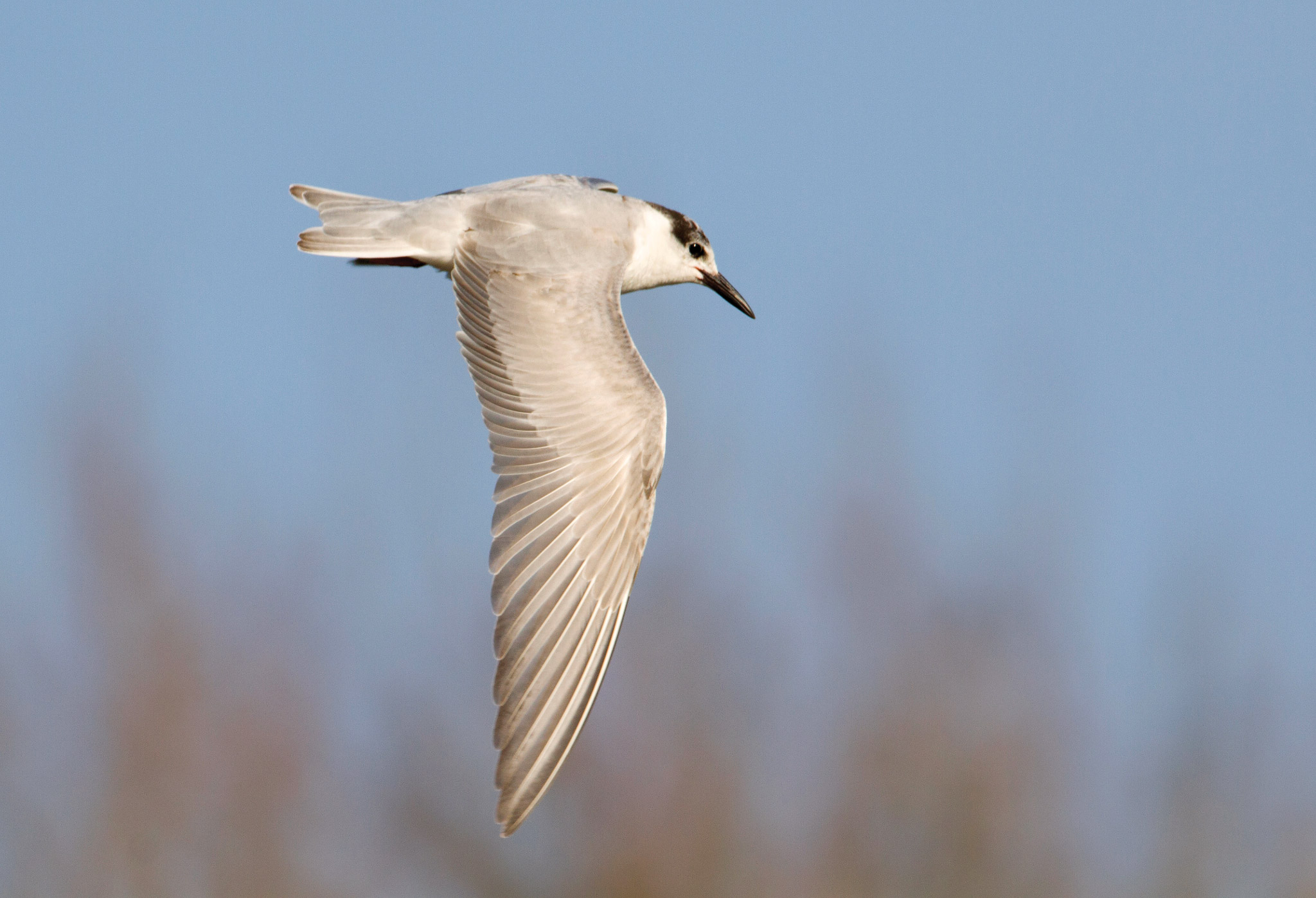
Adult Whiskered Tern (Flevoland, The Netherlands, 12 March 2016). The pale grey-and-white impression is obvious in flight. Note the stocky, broad-winged structure and stout bill. The upperwings are relatively plain, with no strikingly dark primaries, and the rump, uppertail coverts and uppertail – the latter with narrow white tail-sides – are grey, concolorous with the mantle. The Sterna tern-like head pattern is clear (Karel Mauer).
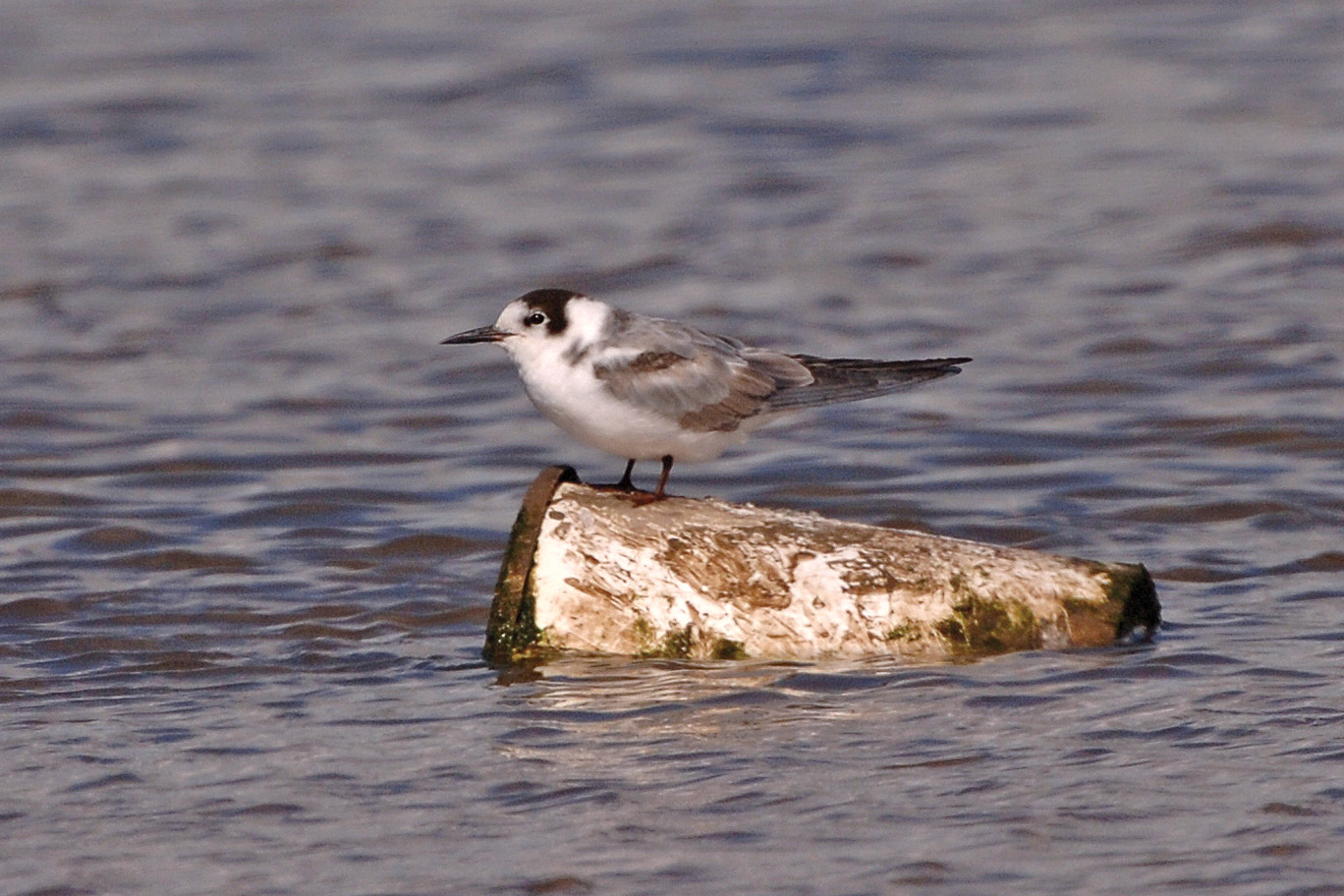
Adult Black Tern (Seaforth, Lancashire, 24 August 2006). Although perhaps resembling a Sterna tern once moulted out of its black summer plumage, this Black Tern shows the typical 'headphones' head pattern of marsh terns. Its identity as a Black Tern is revealed by its long, slender bill and its relatively short legs with no visible 'knee' (Steve Young).
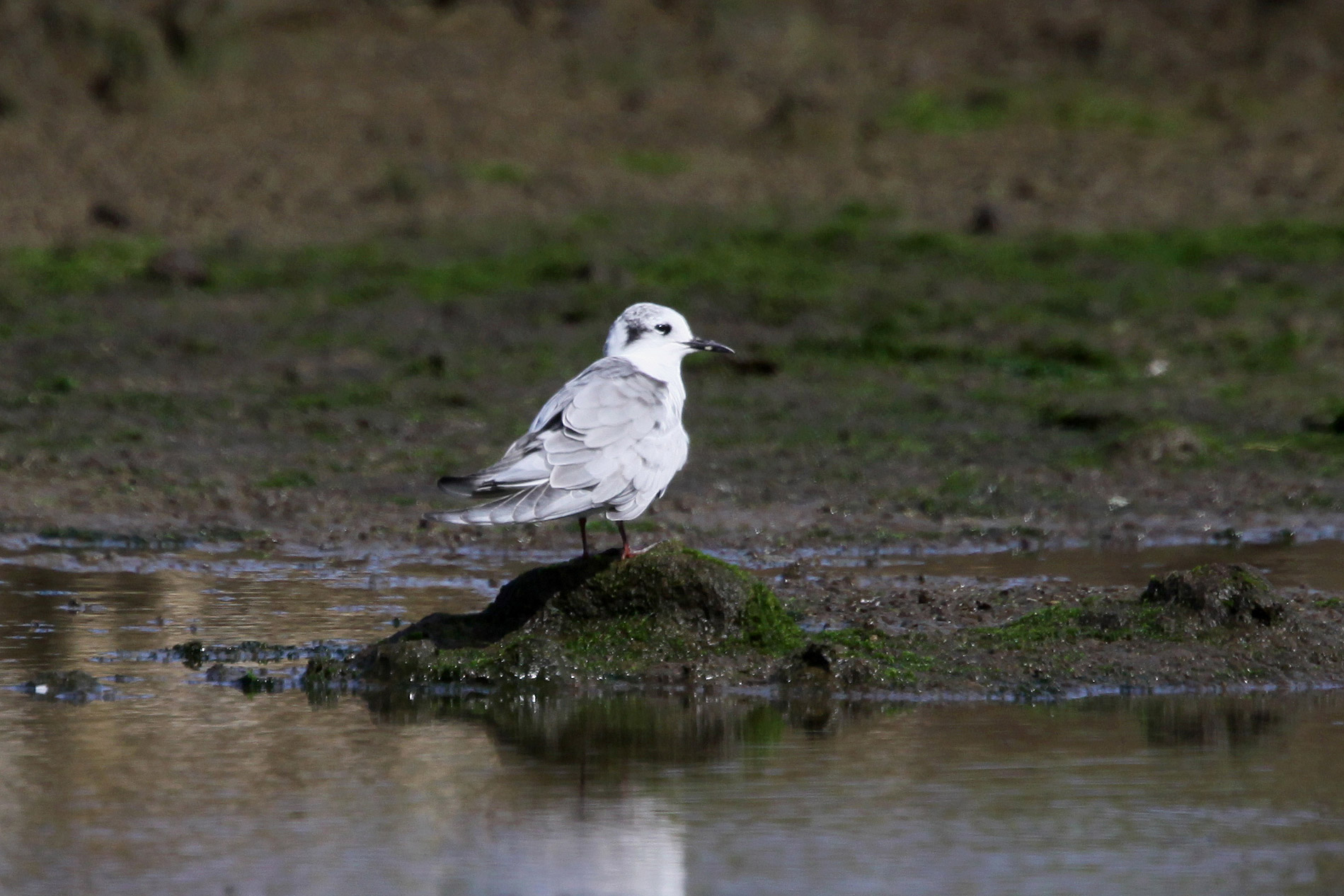
Adult White-winged Tern (Terceira, Azores, 29 September 2010). The weak 'headphones', particularly across the crown, and the short bill are also visible here, confirming that this is a White-winged Tern. There is no trace of a dark 'shoulder mark' either while, although difficult to assess in this image, the legs do look longish with a hint of a 'knee' just visible.
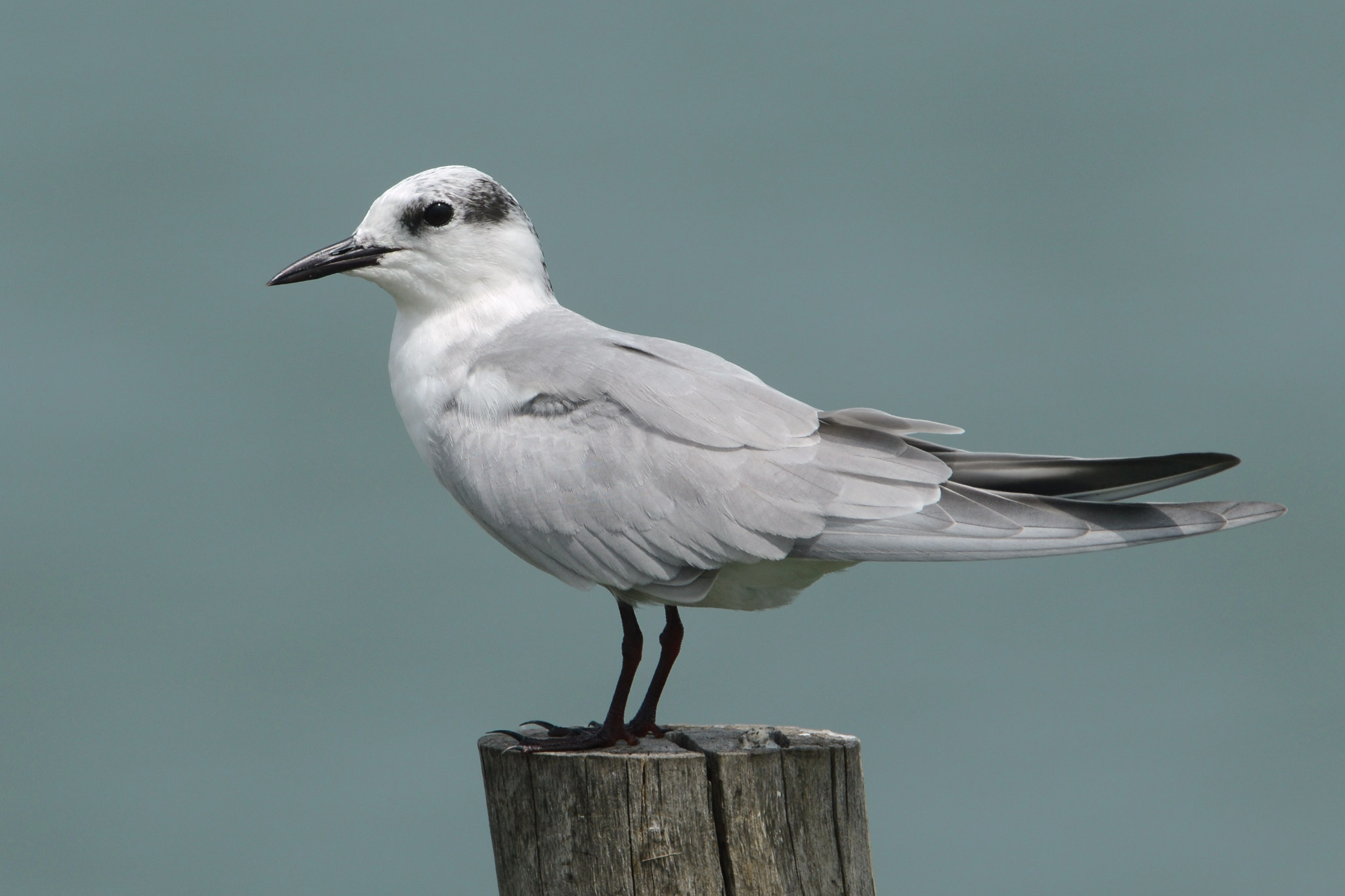
Adult Whiskered Tern (Laem Pak Bia, Thailand, 9 October 2014). This tern is stocky, with a stout, heavy bill with a strongly curved culmen and long legs with a visible 'knee'. This all points to Whiskered Tern. The pale grey upperparts are typical of winter birds, while the head pattern also differs from Black and White-winged Terns, with just small dark areas in front of and behind the eye, resembling a Sterna tern (Ray Tipper).
- This article was originally published in the June 2017 edition of Birdwatch.





